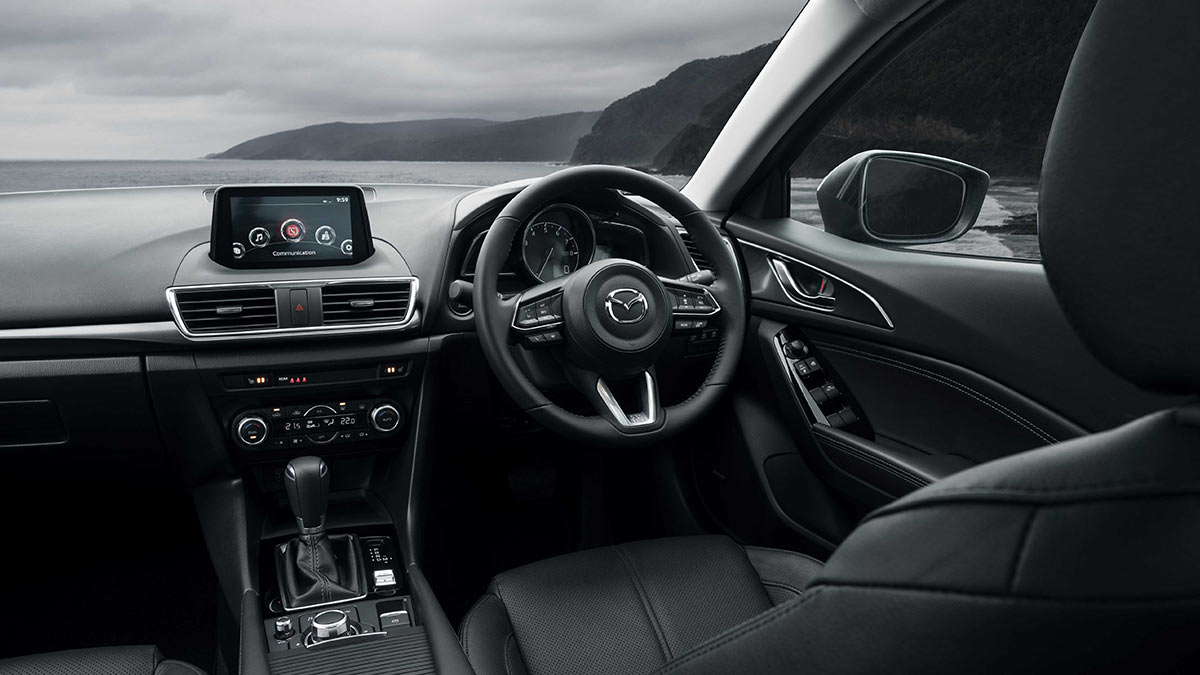The Xpeng G6 reads like a bona fide Tesla Model Y rival, but does that translate from the brochure to reality? Here we’re testing the more expensive G6 Long Range, which lives up to its name with a 570km claimed range.
Mazda3 2013-2018 used car review

Mazda3 has long been one of Australia's top-selling cars. Here's how the 2013-2018 models stack up against the competition.
Mazda 3 has been one of Australia’s top-selling small cars for over 15 years now, so there are plenty of excellent examples to be found on the used market if you shop around.
Its distinctive styling won plenty of hearts, but the 3 was more than just a pretty face. This quality Japanese-built small car also had reassuring on-road ability and an enjoyable, easy-to-live-with nature, combined with proven reliability. It may not be the cheapest car in the class, but it does offer good value for money.
By the third generation, which arrived in early 2014, Mazda had refined it's formula with Skyactiv Technology and fresh design language. The cabin layout’s classy appearance and logically places controls gave the Mazda3 an edge over most of its competitors.
In this article
Small car, big improvements
Although still classified as a small car, the 3 had grown, and an efficient use of interior space meant the cabin was almost as roomy as large cars were just a few years earlier. The choice of five-door hatch or four-door sedan body configurations, two engine options, a six-speed manual or six-speed automatic transmission and six specification grades, provided a variant to suit most small car buyers’ tastes and needs. There was also a mid-life upgrade in 2016. The changes were not massive but well directed and delivered noticeable improvements.
Variant options
With such a broad model range, it is important to know exactly which variant you are looking at, as this will have a significant bearing on the features, performance and how much you should pay. The Neo grade at the start was a touch low rent compared to the others. It came with 16-inch steel wheels (not alloys) and didn’t get Mazda’s excellent MZD Connect multimedia system. At the other end of the line, the SP25 Astina came standard with a full suite of advanced safety technologies – dubbed i-Activesense. These features were available as an option pack on other models and are worth looking for, but unfortunately the take-up was low. Many of these features became standard across the range with the 2016 upgrade and complement the third-generation 3’s five-star ANCAP rating on all variants.
The base model range
The first three grades – Neo, Maxx and Touring – employed Mazda’s Skyactiv 2.0-litre direct-injection petrol engine producing a respectable 114kW and 200Nm. It’s a capable performer that flows along easily around town and cruises comfortably on the open road. Those wanting extra punch can up to a more powerful 2.5-litre, 138kW/250 Skyactiv unit in the higher-spec SP25, SP25 GT and SP25 Astina models. It's smooth and flexible, accelerates effortlessly in suburban traffic and has plenty in reserve for safe passing.
While a manual transmission was available across the range (unlike many brands), the easy driving nature and efficiency of Mazda’s Skyactiv automatic has proven a far more popular choice. Fuel consumption usually ranges from 6.5 to 9.5L/100km with the bigger-engine models tending to use about 1.0L/100km more than the base models, depending on how the extra performance is used. The manual models are also about 0.5L/100km thirstier than their automatic counterparts on average.
The Mazda3 offers an involving drive with a reassuring sense of being securely connected to the road. The balance of ride comfort and surefooted handling is ideally suited to everyday use for this type of car. Tyre noise can be a little higher than some other makes. Minor tweaks to the suspension and the introduction of G-Vectoring control, as part of the 2016 upgrade, delivered a slightly sharper, more dynamic feel.
Known problem areas
For the third generation, Mazda’s recommendation for servicing is every 10,000km or six months, which is more frequent than most other manufacturers, but in the long term this extra maintenance should be better for the car’s durability. Generally speaking, the Mazda3 has one of the better reputations for reliability but you will still find the occasional horror story, often caused by a lack of proper servicing. Therefore, a thorough inspection is important, and the value of a complete and up-to-date service history should not be underestimated.
Most of the problems RACV vehicle inspectors find are normal wearing items such as tyres and brakes. Look out for uneven tyre wear which may mean a wheel alignment is required. It could also be worth checking if suspension wear or damage is the cause. Brake work may also require replacement of the disc rotors. Look for cooling system leaks around the water pump, and faulty engine mounts can cause noticeable harshness and vibrations.






